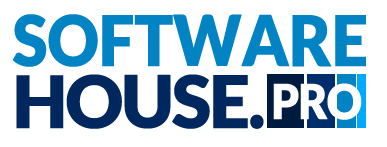The Evolution of Frontend Frameworks: Past and Present
Since the dawn of the modern web, frontend frameworks have continually evolved to become more powerful and efficient. Starting from simple static HTML, the evolution took a significant turn with JavaScript, allowing the creation of interactive and dynamic websites. Following JavaScript, many other frontend frameworks were born. Frameworks like AngularJS, Backbone.js, and Knockout.js started to gain popularity, providing developers with powerful tools for creating complex web applications. Later, evolved versions of these frameworks, like Angular, React, and Vue.js, became the dominant force in frontend development. These frameworks have transformed the way developers write code. Not only did they offer powerful capabilities to developers, but they also allowed an organized and streamlined development process with improved application performance. The evolution of these frontend frameworks also drove a lot of modern web features, such as Single Page Applications (SPAs), JavaScript APIs, and real-time updates.
Trends Shaping the Future of Frontend Frameworks
The rapid pace of technology means that the scope of frontend frameworks is continuously evolving and becoming more sophisticated. Looking ahead to 2024, several trends could shape the development and use of frontend frameworks. Firstly, there is a clear move towards component-based architecture. This approach allows developers to build applications like constructing legos, which promotes code reusability and maintainability. Secondly, we can expect a lot of advancement in the area of serverless architectures and micro frontends. These provide scalability and versatility, allowing frontend components to communicate with different backend services independently. Thirdly, the increased use of artificial intelligence and machine learning in frontend development will further automate and streamline coding processes, enabling even more personalized user experiences. Lastly, performance optimization will continue to be a major focus, with developers keen to deliver highly responsive and fast applications. This focus will drive innovations in areas like tree shaking, lazy loading, and other techniques for efficient code rendering and delivery.
What to Expect from Frontend Frameworks in 2024?
By 2024, we can expect frontend frameworks to have embraced and integrated the trends mentioned above. AI-driven development is likely to be more mainstream, possibly with AI making code suggestions or even writing portions of the code itself. In terms of architecture, micro frontends will probably be widely adopted, providing a way to break up monolithic applications into smaller, more manageable parts. This architecture will also allow multiple teams to work on different parts of an application simultaneously, speeding up development times. Simultaneously, performance optimizations like lazy loading and tree shaking will become standard practices, ensuring that even the most complex web applications load swiftly and run perfectly. Alongside these technological advancements, the community around frontend frameworks will continue to grow, with more resources, tutorials, and third-party libraries becoming available. Consequently, the learning curve for new developers will continue to get smoother, making frontend development accessible to a broader audience than ever before.

The Impact of APIs on Frontend Frameworks
The advancements in Application Programming Interfaces (APIs) is another factor poised to drive the evolution of frontend frameworks. APIs are becoming increasingly important in connecting frontend with backend services, streamlining the flow of data and simplifying the development process. With APIs, frontend developers can interact with data from various sources and services without having to delve into the complexities of backend development. By 2024, APIs will likely become even more integrative, providing easier and more efficient interaction between different services. Not only will this decrease development time, but it will also improve application performance. Furthermore, the development and utilization of APIs will facilitate the evolution of microservices and serverless architectures in frontend frameworks, offering even more flexibility in the interaction and connection of various application components. To sum up, the API-driven development will become a crucial aspect of frontend frameworks, ultimately leading to more efficient and interoperable web applications.
Evolution of UI/UX Design Considerations
User interface (UI) and user experience (UX) are vital aspects of frontend development. By 2024, advancements in frontend frameworks will be closely tied to improvements in UI and UX design. The rise of responsive design has already emphasized the importance of creating intuitive and visually appealing interfaces across all devices. As technology progresses, there will be increased focus on delivering personalized user experiences based on individual user preferences. AI and machine learning are likely to play a significant role in this, delivering highly customized and adaptive interfaces. Moreover, the focus on accessibility will continue to drive the evolution of frontend frameworks, with developers incorporating practices that make web applications more accessible to users with disabilities. Consequently, as frontend frameworks evolve, so will UI/UX design considerations, aiming to create more interactive, accessible, and user-driven web experiences.
Role of Frontend Frameworks in Mobile App Development
The role of frontend frameworks in mobile app development will also continue to evolve. With the rise of mobile devices, there is an increased demand for mobile apps that deliver seamless user experiences. Frontend frameworks such as React Native and Vue Native are increasingly being leveraged to build mobile apps with native-like performance. By 2024, we can expect these technologies to take a quantum leap. Developers will leverage them to build sophisticated mobile apps with complex frontend requirements. At the same time, these frameworks will also facilitate cross-platform development, allowing developers to build mobile apps that work seamlessly across various platforms using a single code base. This will not only reduce development time and costs but also ensure consistent user experience across different devices. Additionally, with the advancement of technologies like augmented reality (AR) and virtual reality (VR), frontend frameworks will play an integral role in incorporating these features into mobile applications, elevating the overall user experience to a whole new level.

The Emergence of Progressive Web Apps
Progressive Web Apps (PWAs) are likely to have a significant impact on the future of frontend frameworks. They have blurred the lines between websites and native mobile applications by providing a mobile app-like experience on the web. Advancement in frontend frameworks will undoubtedly facilitate the development of PWAs, making them more robust and feature-rich. Developers will leverage these frameworks to build PWAs that can work offline, send push notifications, and even access device hardware. Furthermore, the beauty of PWAs lies in their ability to be installed on a user's device without the need for app stores, providing an easy distribution channel for developers. Consequently, by 2024, we can expect frontend frameworks to provide more robust support for PWA development, powering a new generation of web experiences.
Impact of Big Data and IoT
The advancement in frontend frameworks will also be influenced by the rise of Big Data and the Internet of Things (IoT). As more devices connect to the internet, there will be a surge in the volume of data generated. Frontend frameworks will need to accommodate and efficiently manage the influx of data. In this regard, improvements in data binding, state management, and real-time updates will be crucial. IoT will change the way web applications interact with the surrounding environment, posing unique challenges, and opportunities for frontend frameworks. For instance, frameworks will need to handle the regular data updates from IoT devices, paint the UI accordingly and sometimes send commands back to these devices. The synthesis of Big Data with IoT will drive the evolution of frontend frameworks towards building more interconnected, data-driven, and dynamic web applications.
The Proliferation of Development Tools and Libraries
The development of frontend frameworks is closely tied to the evolution of development tools and libraries. These software aids are the backbone of a development ecosystem, offering out-of-the-box solutions to common programming problems and enhancing the coding experience. As frontend development becomes more complex, we can expect more powerful and feature-rich tools and libraries in 2024. Some of these tools will have features like intelligent code completion, advanced debugging, and support for the latest ECMAScript features. Concurrently, the popularity of package managers such as npm and yarn is likely to grow, providing developers with easy access to a vast collection of libraries and tools. The evolution of development tools and libraries will significantly augment the capabilities of frontend frameworks, enabling the creation of more complex and powerful web applications.
| Framework | Current Features | 2024 Predicted Features | Development Tools | Impact on UI/UX |
|---|---|---|---|---|
| Angular | Component-based architecture, Two-way data binding | AI-driven development, Tree shaking and lazy loading | npm, yarn | Highly customized and adaptive interfaces |
| React | Virtual DOM, One-way data binding | Performance optimizations, Support for PWAs | npm, yarn | Personalized user experiences |
| Vue.js | Reactive two-way data binding, Simple integration | AI-driven development, Robust support for PWAs | npm, yarn | Interactive, accessible, and user-driven web experiences |
| React Native | Native-like performance, Cross-platform development | Advanced AR/VR features, Consistent UX across devices | npm, yarn | Seamless mobile user experiences |
| Vue Native | Easy to learn, Reusable components | Performance optimizations, Feature-rich mobile apps | npm, yarn | Improved mobile UI and UX |
Frontend Frameworks and the Internet of Things (IoT)
The growing Internet of Things (IoT) is another area where frontend frameworks are likely to play a significant role. As more and more devices are connected to the internet, we can foresee an increased need for frontend interfaces that can handle data from various IoT devices efficiently. By 2024, frontend frameworks will likely be advanced enough to deal with large-scale IoT infrastructures. Several frameworks already offer capabilities to handle real-time data, and we can expect this to become more prevalent. Furthermore, the use of frontend frameworks in building IoT interfaces can help make these interfaces more user-friendly and visually appealing. The focus on user experience and design in frontend development would help ensure that these IoT interfaces are intuitive for users, thereby driving wider acceptance and usage of IoT applications. Moreover, efficient data presentation and visualizations would be critical in IoT applications, and frontend frameworks would play a vital role in this regard. In a nutshell, the growing IoT trend would also be a significant driver for the evolution of frontend frameworks.
The Impact of Blockchain on Frontend Frameworks
Another emerging technology that could significantly influence the evolution of frontend frameworks is the blockchain. As blockchain technology continues to evolve, there will be increased demand for frontend interfaces that can interact effectively with these decentralized networks. By 2024, we could expect frontend frameworks that are specifically designed or geared towards blockchain-driven applications. Developers will strive for clear and user-friendly interfaces to break down the complexity of blockchain technology for users. Additionally, using frontend frameworks that can efficiently handle data from blockchain networks would be of high importance. As blockchain technology progresses and becomes more accessible, frontend frameworks will follow suit, evolving to meet the requirements of blockchain applications. This progression could lead to innovations in how we develop and implement frontend interfaces for these increasingly important and revolutionary networks.
A Look at the Role of Augmented and Virtual Reality in Frontend Frameworks
Augmented reality (AR) and virtual reality (VR) technologies are also giving a new direction to the development of frontend frameworks. As these technologies become more mainstream, the need for frontend frameworks that can handle AR and VR will increase. By 2024, we predict that a more significant number of frontend frameworks may be designed to handle AR/VR, taking the digital experience a notch higher. Given the data-heavy nature of AR/VR applications, efficient data handling and presentation techniques would be crucial, making the role of frontend frameworks essential. Developers will not only need to consider the design and interactivity of their applications but also how they can optimally present vast amounts of data in real-time. Simultaneously, creating a seamless and immersive user experience will be an equally pressing concern, thereby influencing frontend frameworks to evolve in this direction.







